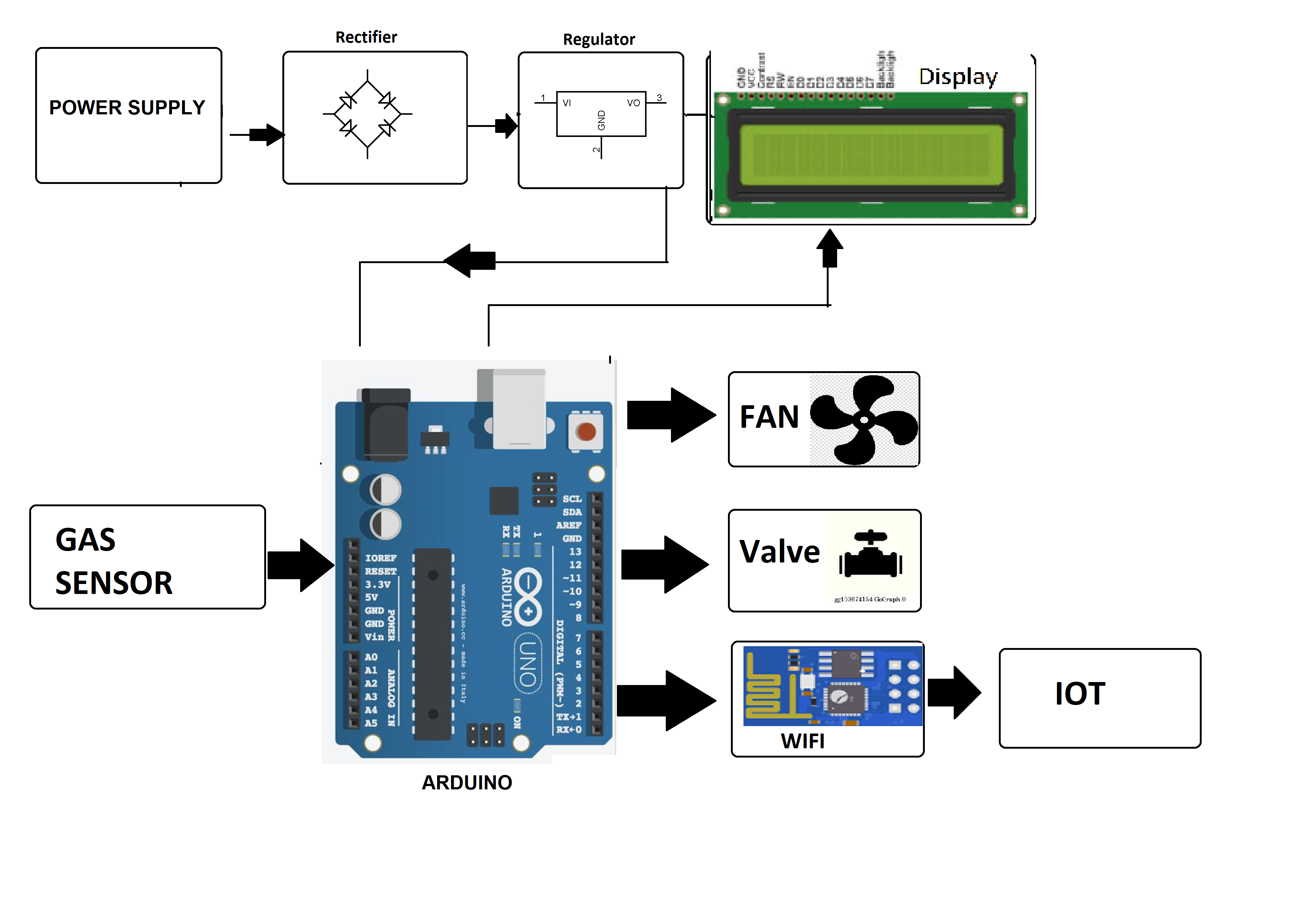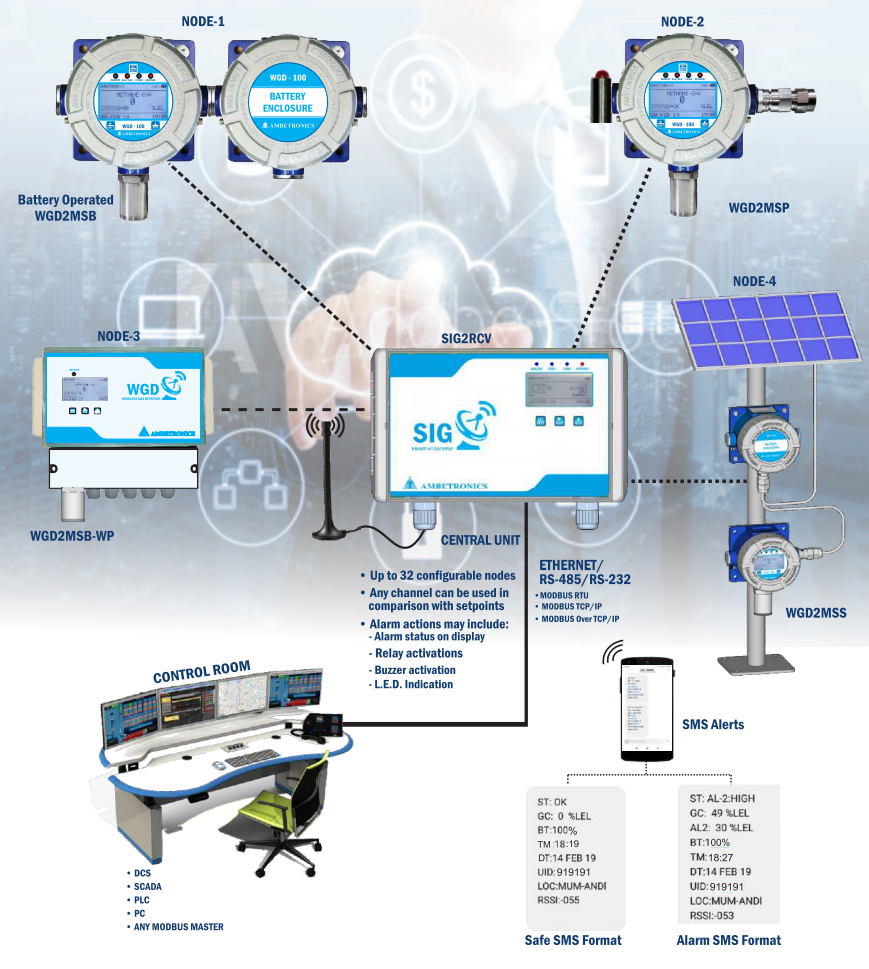Iot Gas Detector Presentation
| Introduction to IoT Gas Detector | ||
|---|---|---|
| An IoT gas detector is a device that uses Internet of Things (IoT) technology to monitor and detect the presence of hazardous gases. It provides real-time data on gas levels, allowing for immediate response and prevention of potential accidents. The IoT gas detector can be integrated into a larger smart home or industrial automation system for enhanced safety. | ||
| 1 | ||
| How Does an IoT Gas Detector Work? | ||
|---|---|---|
| An IoT gas detector consists of gas sensors, a microcontroller, and connectivity modules. Gas sensors detect the presence of specific gases and send signals to the microcontroller. The microcontroller processes the data and sends it to a cloud-based platform or mobile application for real-time monitoring and alerts. | ||
| 2 | ||
| Key Features of IoT Gas Detectors | ||
|---|---|---|
| Remote Monitoring: Users can monitor gas levels and receive alerts from anywhere using a smartphone or computer. Data Analytics: IoT gas detectors collect and analyze data to identify patterns, trends, and potential risks. Integration Capabilities: These detectors can be integrated with other IoT devices and systems, such as security systems or ventilation controls. | ||
| 3 | ||
| Benefits of IoT Gas Detectors | ||
|---|---|---|
| Improved Safety: Real-time monitoring and alerts enable quick response and evacuation in case of gas leaks or high gas concentrations. Cost-Efficiency: Early detection and prevention of gas leaks can save lives and minimize damage to property, reducing costly repairs and insurance claims. Remote Management: Monitoring gas levels remotely saves time, allowing for efficient management of multiple locations or facilities. | ||
| 4 | ||
| Applications of IoT Gas Detectors | ||
|---|---|---|
| Residential: IoT gas detectors can be used in homes to detect carbon monoxide or natural gas leaks, ensuring the safety of occupants. Industrial: Gas detectors are crucial in industrial settings like factories, refineries, and chemical plants to monitor and prevent gas leaks. Commercial: Buildings such as hotels, offices, and shopping malls can benefit from IoT gas detectors to ensure the safety of employees and customers. | ||
| 5 | ||
| Challenges and Considerations | ||
|---|---|---|
| Sensor Accuracy: Ensuring the accuracy and reliability of gas sensors is crucial for proper detection and prevention. Connectivity and Compatibility: IoT gas detectors must be compatible with existing IoT systems and have reliable connectivity. Power Consumption: Balancing power consumption and battery life is essential for continuous and long-term monitoring. | ||
| 6 | ||
| IoT Gas Detectors vs. Traditional Gas Detectors | ||
|---|---|---|
| Real-Time Monitoring: IoT gas detectors provide real-time data and alerts, while traditional detectors require manual checks. Connectivity: IoT gas detectors can be remotely monitored and managed, whereas traditional detectors require physical presence. Data Analysis: IoT gas detectors collect and analyze data for insights and proactive measures, which traditional detectors lack. | ||
| 7 | ||
| Case Study: Smart Home Integration | ||
|---|---|---|
| In a smart home, an IoT gas detector can automatically trigger ventilation systems or shut off gas supply in case of a leak. Homeowners receive immediate alerts on their smartphones, allowing them to take necessary actions or evacuate if needed. Integration with other smart home devices, such as cameras or security systems, enhances overall safety and security. | ||
| 8 | ||
| Future Trends in IoT Gas Detection | ||
|---|---|---|
| Artificial Intelligence: AI algorithms can improve gas detection accuracy and enable predictive maintenance. Blockchain Technology: Blockchain can ensure the integrity and security of gas detection data, preventing tampering or falsification. Machine Learning: Machine learning algorithms can analyze historical data to identify patterns and predict potential gas leak risks. | ||
| 9 | ||
| References (download PPTX file for details) | ||
|---|---|---|
| [Insert references here]... Your second bullet... Your third bullet... |  | |
| 10 | ||







